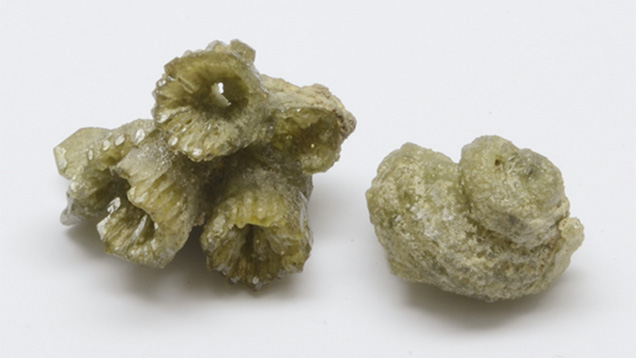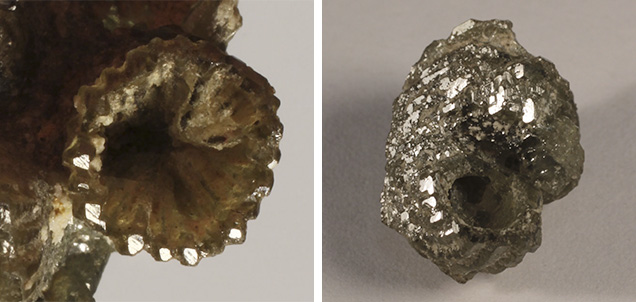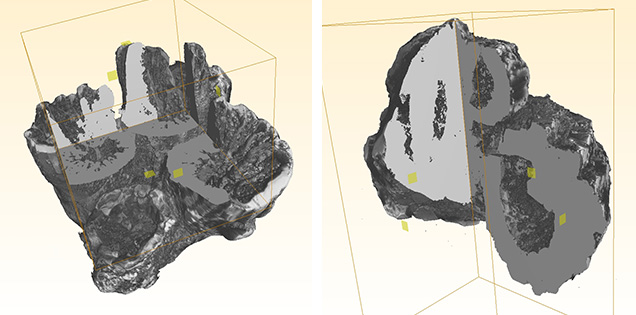Demantoid Garnet Fossil Pseudomorphs


Figure 2. Both the coral (left) and the gastropod (right) appear to be single crystals, as revealed by concomitant light reflection (in white) on multiple, parallel rhomboidal crystal faces. Photos by Benjamin Rondeau (left) and Pierre-Yves Chatagnier (right).
It is surprising to observe demantoid replacing a fossil, but some pseudomorphs in gem minerals have been documented, such as pseudomorphs of snail-like gastropods in emerald (P. Vuillet et al., “Les émeraudes de Gachalá, Colombie; historique, genèse et découvertes paléontologiques,” Le Règne Minéral, Vol. 46, 2002, pp. 5–18). Most surprising is that these pseudomorphs were monocrystals. To investigate how the fossils were replaced by demantoid, we submitted the pieces for X-ray tomography analysis to the Laboratoire Français de Gemmologie (LFG) in Paris. They used an RXSolutions DeskTom 130 system; results are given in figure 3. There are no remains of the original fossil. The objects were formed entirely out of andradite, which apparently grew from the solid parts of the animal towards the outside of the shell, and inward toward the hollow parts. Hence, some of the hollow parts were not yet completely filled. Lighter shades of gray were due to less-dense material.
Figure 3. X-ray tomography revealed that both fossils are made entirely of demantoid, and that some internal cavities of the organism remained partially empty.
The fact that the present pieces appear polycrystalline but display evidence of being single crystals suggests that the original fossil was replaced by the growth of many small garnet crystals of random orientation. By that theory, they later coalesced and evolved into a single crystal through the process known as Ostwald ripening (I. Sunagawa, Crystals, Cambridge University Press, 2005, p. 258). These pieces are therefore not a pseudomorph stricto senso, as details of the hard parts are lost, but more exactly, recrystallized psedomorphs with relatively well-developed crystal faces.



